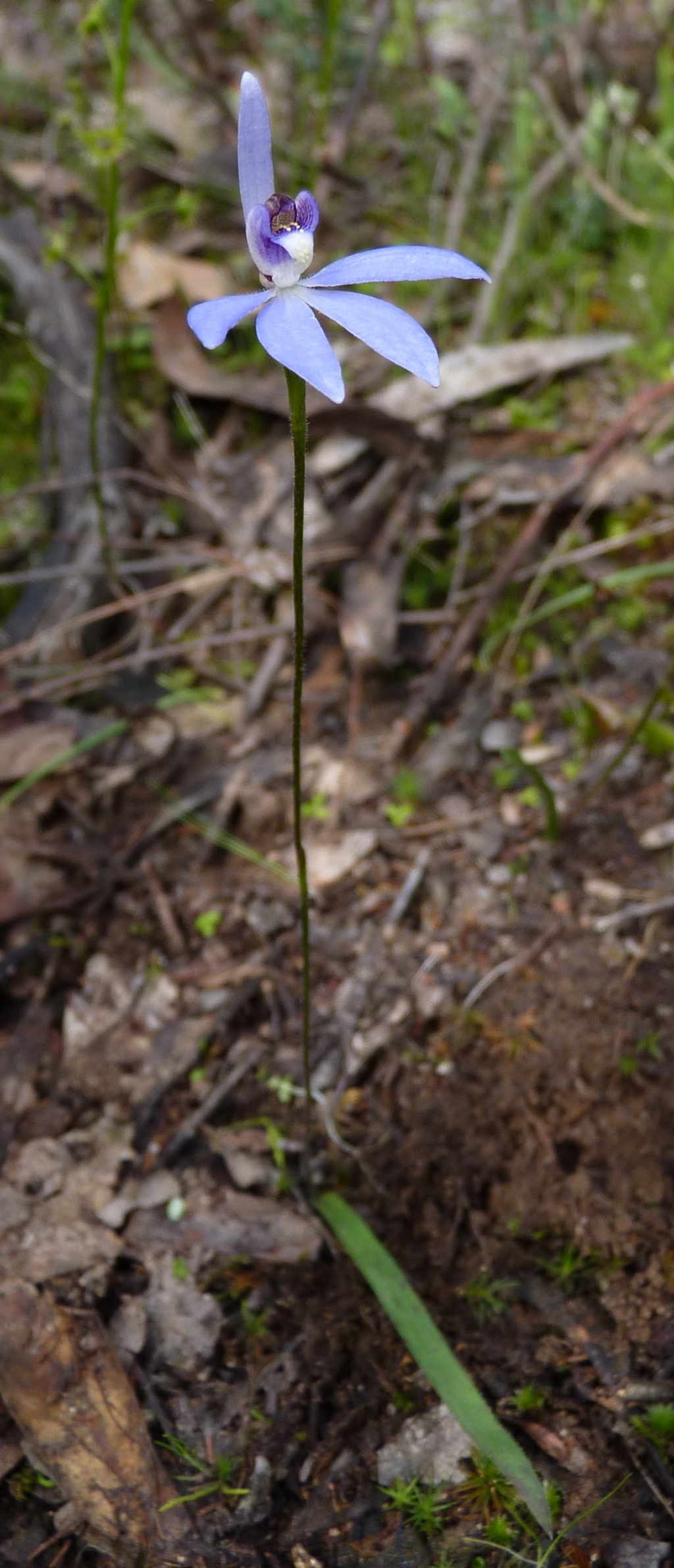Cyanicula caerulea
(R.Br.) Hopper & A.P.Br.Flowering plant very slender, 5–18 cm tall. Leaf linear, 2–7 cm long, 2–5 mm wide. Flowers solitary, pale to bright blue (rarely white); ovary c. 5 mm long; perianth segments 9–18 mm long, outer surface paler and with scattered tiny dark blue glands; dorsal sepal erect, narrowly elliptic; lateral sepals and petals spreading or somewhat deflexed, elliptic to elliptic-ovate, slightly asymmetric, broader than dorsal sepal. Labellum very shortly clawed, 3-lobed, c. 7–8 mm long (when flattened), blue, with dark blue transverse bars; lateral lobes prominent, broad, erect, margins entire; mid-lobe recurved, narrowly wedge-shaped, margins entire, white and yellow (rarely blue and yellow); lamina calli in 2 rows (sometimes 4 at base) extending to apex, with dark stalks and yellow clubs, becoming sessile near tip. Column incurved, narrowly winged, dark blue; anther with long point. Flowers Jul.-Oct.
Wim, VVP, VRiv, GipP, OtP, Gold, CVU, GGr, NIS, EGL, EGU, WPro, HSF, HNF, Strz, VAlp. Occurs in open-forests, principally in central Victoria (e.g. goldfields country). Usually growing on ridges and slopes in shallow, stony soils, but extending to coastal heaths in the east of the State.
Cyanicula caerulea var. heliotropica (Rupp) Hopper & A.P.Br., based on plants found near Dubbo (NSW), differs from the plants described above in having unusually large violet-blue flowers with all labellum calli white or cream, and the labellum mid-lobe pure white. Plants resembling this variety have been seen in Mt Samaria State Park, but this entity does not seem to warrant taxonomic recognition, at least in Victoria.
Entwisle, T.J. (1994). Orchidaceae. In: Walsh, N.G.; Entwisle, T.J., Flora of Victoria Vol. 2, Ferns and Allied Plants, Conifers and Monocotyledons, pp. 740–901. Inkata Press, Melbourne.
 Spinning
Spinning
